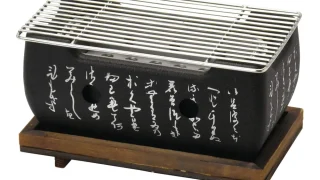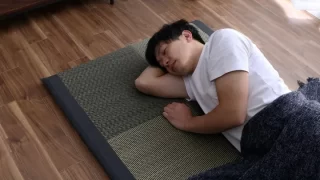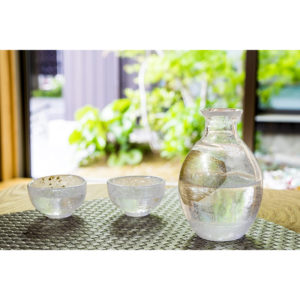Origin and history of Manekineko lucky beckoning cat
Manekineko lucky beckoning cat is a lucky charm spread all over Japan from Edo (Tokyo).
Manekineko lucky beckoning cat is a lucky charm unique to Japan that invites good fortune with its adorable pose. It is said to have originated from the townspeople culture of Edo (Tokyo) during the Edo period, and its popularity spread throughout the country. Not only do the blessings differ depending on the left and right of the raised hand, but the production area, material, and expression of the cat also differ.
Even today, Manekineko lucky beckoning cats can be seen at the eaves of Japanese shops. Manekineko lucky beckoning cat is a lucky charm that is displayed with wishes for prosperous business and many customers.
What is the meaning of Manekineko lucky beckoning cat's hand, color, and belongings?
Maneki-neko actually has a variety of appearances. Introducing the meaning behind the parts and colors of Manekineko lucky beckoning cat.
Contents
About the hand of Manekineko lucky beckoning cat
Manekineko lucky beckoning cat hands have meaning.
In general, the Manekineko lucky beckoning cat with its right hand raised invites money, while the one with its left hand raised invites people (guests). It is said that the name Manekineko lucky beckoning cat, which raises its right hand, came to be called money invitation because many people often use their right hand, which is their dominant hand, to handle money. Some of the Manekineko lucky beckoning cats raise their hands to invite money and people, but many people avoid it because it looks like they're giving up. There is also a difference in the height of the raised hand. Those whose hands are raised above their ears are called ``long hands,'' and those whose hands are raised slightly below their ears are called ``short hands.'' It is said that short ones invite familiar good fortune and modest happiness.
About the color of Manekineko lucky beckoning cat
White Manekineko lucky beckoning cat
The white Manekineko lucky beckoning cat has been common since ancient times. Many are pure white or have a calico pattern on a white background. Pure white means 'good luck and good fortune' and is said to bring good fortune in all things.
Black Manekineko lucky beckoning cat
It has the meaning of talisman against evil. In Japan, they were considered to be able to see at night and have strong spiritual powers, so they were called 'lucky cats' and symbolized talismans and good luck, and in Kyoto, they were a symbol of prosperous business.
Red Manekineko lucky beckoning cat
It is said to have the benefits of warding off illness and longevity. The red color is said to have been abhorred by the god of smallpox (the god of smallpox).
In recent years, in addition to these traditional ones, colorful Manekineko lucky beckoning cats such as pink and gold have also appeared to bring luck in love and money.
Belongings of Manekineko lucky beckoning cat
The image of Manekineko lucky beckoning cats is that they carry gold coins, but early Manekineko lucky beckoning cats did not have gold coins, and most of them had bells hanging from their collars. It is said that these bells gradually changed to koban.
The money and auspicious words such as “good luck” and “blessing” are drawn on the koban, directly reflecting the wishes put into the Manekineko lucky beckoning cat. What is interesting is that the amount of money drawn on the koban jumps from "1,000 ryo" and "10,000 ryo" to "100 million ryo" over time. The more modest the amount, the older it is basically considered.
Nowadays, there are not only koban, but also Manekineko lucky beckoning cats with various lucky charms such as sea bream, daruma, rakes, and hammers. It can be said that there are as many variations of Manekineko lucky beckoning cat as there are wishes.
History of Manekineko lucky beckoning cat
The origin of the mysterious Manekineko lucky beckoning cat Wild cats have lived in Japan for a long time, but domestic cats as pets did not exist. Domestic cats came to Japan during the Nara period. Came to Japan from China with Buddhism. It is said that they were carried on boats to protect Buddhist scriptures and books from rat damage.
The oldest descriptions of cats are found in books written in the early Heian period, and since the Makura no Soshi and The Tale of Genji contain descriptions of domestic cats, cats must have been familiar to us at least during the Heian period.
The origin of Manekineko lucky beckoning cat is uncertain, but given that domestic cats came from China, it is speculated that it was influenced by China. In fact, according to the Manekineko no Bunka Shi, there is a Chinese proverb that means, "If a cat is washing its face, if it goes over its ear, guests will come after a while."
How to decorate Manekineko lucky beckoning cat
Manekineko lucky beckoning cat was often placed on household Shinto altar during the Edo period as an object of folk belief. However, the religious significance gradually faded, and they came to be placed mainly in conspicuous places such as shop fronts. At home, it is said that the Manekineko lucky beckoning cat can be displayed anywhere, but it is important that it is visible.
Author Profile
Latest entries
 matcha bowl / Yunomi tea cup2025年1月21日Kutani ware teacups are very easy to use
matcha bowl / Yunomi tea cup2025年1月21日Kutani ware teacups are very easy to use Japanese style BBQ stove grill2025年1月20日Combine a Japanese style BBQ stove grill and sake cups for a special dinner
Japanese style BBQ stove grill2025年1月20日Combine a Japanese style BBQ stove grill and sake cups for a special dinner SAKE bottle and SAKE cup2025年1月17日Mino Ware Gold-painted Sake Ware is Very Beautiful
SAKE bottle and SAKE cup2025年1月17日Mino Ware Gold-painted Sake Ware is Very Beautiful NEWS2025年1月17日Tatami rush grass nap Fluffy Foldable Sleeping Mattress is comfortable
NEWS2025年1月17日Tatami rush grass nap Fluffy Foldable Sleeping Mattress is comfortable



